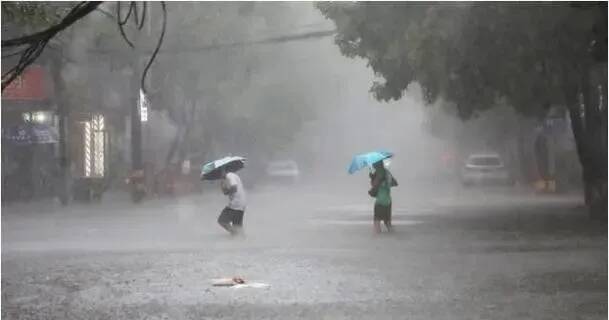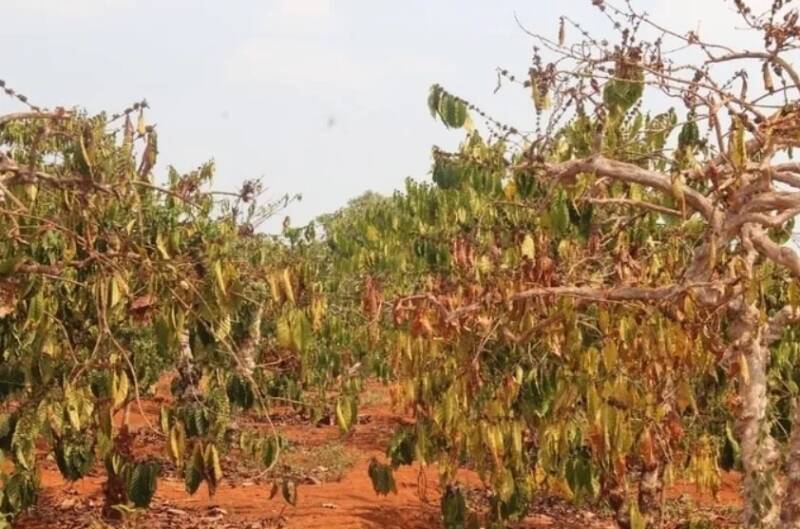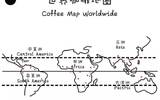Drought and pest attacks! Vietnamese coffee production may be further reduced
Recently, the World Meteorological Organization (WMO) warned that extreme weather is frequent and climate change is hitting Asia hard.
At present, torrential rains, strong winds, floods and other extreme weather have occurred in some Asian countries, such as China, Dubai and other cities, which have been seriously affected. In South Asia, however, there are high temperatures in many countries, such as Thailand, Laos, Vietnam and Indonesia, with the highest temperatures exceeding 45 ℃ in many regions.

According to the World Meteorological Organization, Asia is the worst-hit region in the world, with floods and storms causing the highest casualties and economic losses, while high temperatures are more severe, especially on agricultural crops such as coffee.
In the Robusta coffee producing area of Vietnam, it has been in a state of high temperature recently, and the high temperature has also led to the drought in the region. Therefore, coffee trees in the fruiting period need to significantly increase the use of irrigation water, but the current water resources are insufficient.

Due to drought and soaring temperatures, the riverbeds of several reservoirs have obviously dried up and cracked, and hundreds of thousands of fish have died in the reservoirs. Five provinces in Vietnam, including Quangji, Quang Ngai, Binh Shun, Fu'an and Calais, have issued secondary drought warnings.
According to local farmers, coffee trees are usually irrigated five times in the normal season, but in the current quarter, many farmers have irrigated coffee trees seven times and think they need irrigation for the eighth time, but there is not enough water to do so.
Wells and groundwater used for irrigation are drying up, leading to nutritional imbalances in trees under severe water shortages and extreme high temperatures. In addition, the hot and dry environment will be conducive to the growth and spread of some pests, and these pests are mainly cotton bollworm, which will damage flowers and fruits on plant trees, resulting in a decline in final yield.
Recently, some coffee plants in Vietnam have withered and yellowed their leaves, some of which are attacked by insect pests in addition to excessive drought.
According to reports, at present, Calais Province, which is the main coffee producing area in central Vietnam, has not been controlled by cotton bollworm, and the pest spreads quickly, so the current situation is very serious.
But in May, the weather will improve slightly, and it will rain in Vietnam. Vietnam's local meteorological department said that the rainfall in May may be about 2.27 mm, which will ease the current drought.
Recently, the International Coffee Organization released statistics in recent months that global coffee exports increased by 8.1% to 12.99 million bags in March 2024, so coffee futures prices have been falling in recent days even if future production is not optimistic in many producing countries.
Important Notice :
前街咖啡 FrontStreet Coffee has moved to new addredd:
FrontStreet Coffee Address: 315,Donghua East Road,GuangZhou
Tel:020 38364473
- Prev

Introduction to varieties in Kona coffee producing area, Hawaii, USA
As we all know, coffee is generally grown in the coffee-growing belt, which is the equatorial zone between the Tropic of Cancer. However, the United States is not within this range, and its climatic conditions are not suitable for coffee growth. However, some states in the United States have successfully grown coffee under characteristic conditions, such as Hawaii and California. Hawaii (H
- Next

"Selected by Allergy Sister"! The same drink has become a craze for exploring restaurants in Wuhan!
▲ Click to pay attention| Daily Boutique Coffee Culture Magazine Coffee Workshop A legendary story occurred in Wuhan coffee circles last Sunday: a customer called "allergic lady" by netizens asked 41 coffee shops for refunds on the grounds that the drink caused allergic symptoms after drinking it. After the incident attracted attention, many injured coffee shops have been renovated.
Related
- Being chased out of the rain in front of Starbucks?! Store: Sheltering from rain under umbrellas poses a safety hazard
- The white moonlight has changed?! Lucky launches "Big Winter Pear American"
- Hand-brewed coffee three-stage method, high-sweet and universal brewing method to share! What does the high sweet water level of hand-brewed coffee mean?
- What is the difference between raw, refined and full espresso coffee? How to extract espresso and taste good?
- A complete list of coffee bean names and their meanings! What is Yejia Shefi coffee? Where is Mantelin coffee?
- What grade does Arida Manor Kaduai coffee beans belong to? What treatment is Arida ASD slow anaerobic sun exposure?
- The milk tea cup becomes smaller?! Overlord Tea Girl launches a new "Return to Yunnan" series
- Accused of selling counterfeit and high-priced coffee beans! Well-known boutique coffee brand "Oukelao" bowed and apologized!
- How to make espresso dumplings? Can I eat coffee and glutinous rice balls together?
- Save the unformed and stagnant powder cakes in one second! What is the problem with stagnant water in the powder bowl of the espresso machine?

